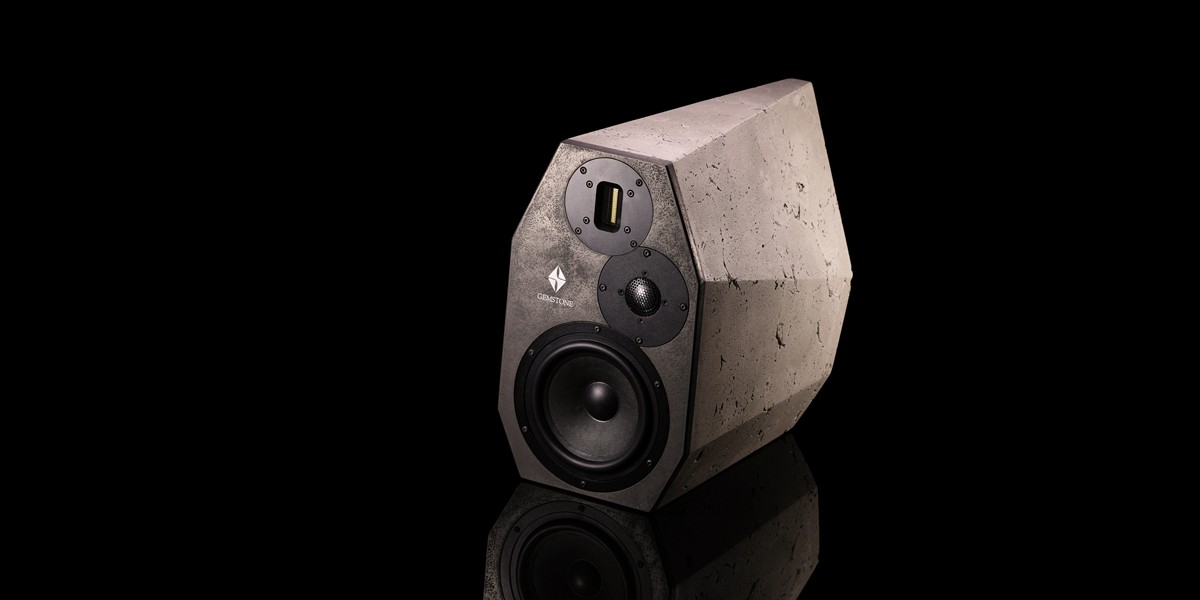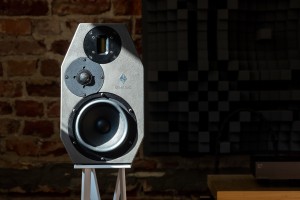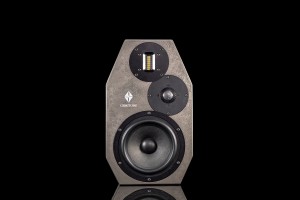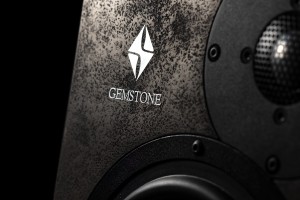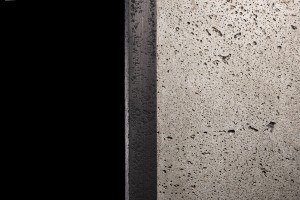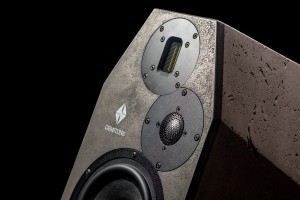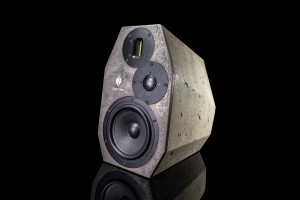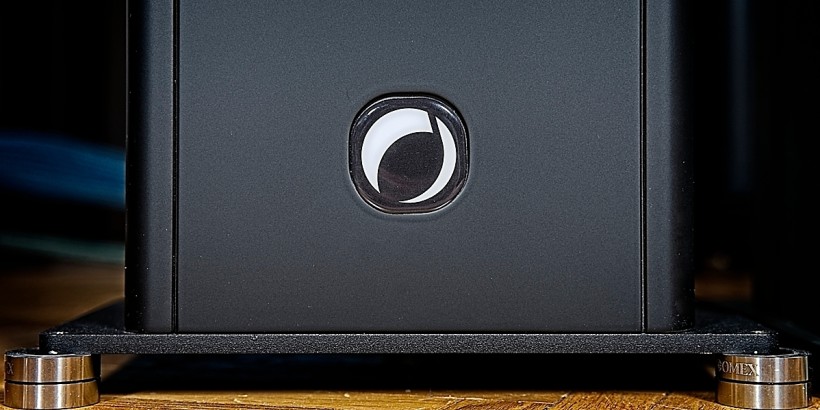Although the company Gemstone is fairly new and unknown outside the local market, it deserves the attention of broader audience. Gemstone Libra is the compact stand mount from this lineup and our subject today. Enjoy!
Concrete concretes
Time: May 2024. Location: Munich’s MOC. Target: whatever’s interesting. Attitude: curious. This encapsulates my mindset shortly prior to tackling the first day of this year’s High End event. Although approached casually and without any firm expectations, to me this still was a mission of sorts. To fully enjoy it and keep any pressure at bay, my plans were minimal. Visits to a handful of the usual rooms and talks to their hosts are always on the table. Other than this however I intended to just wander around the place and perhaps stumble upon one or two gems worth remembering and pursuing later on. Had I been mainly into oligarch-fi, the MOC’s atrium levels would’ve been just the hunting ground. They’re not, which is why my best discoveries always hide in unexpected places somewhere on the location’s ground floor. This year I found Gemstone there, and what a find it turned out to be. If you’re a newcomer company to the show, securing one of the atrium rooms is nigh impossible. These highly sought-after spaces are occupied year after year by the same audio houses, often assisted by their German distributors. Needless to say, an opening can present itself only when one of the usual atrium exhibitors resigns, which is rare. Instead of waiting for that to happen, quite a few businesses known for luxurious goods simply take the available space in one of four halls below. Every now and then this nets excellent results. This year booths put together i.e. by Audio Group Denmark were such a standout and big attractor to boot. So much so in fact that these Danes don’t even consider pursuing atrium space. The key takeaway is elsewhere. It narrows down to being proactive rather than reactive and consequently making the best out of what we have at our disposal. This approach seems far better than skipping the most important audio gig in this part of the world. Although on a lesser scale and within a semi-open space that’s far from ideal, the local company AudioPhonique followed suit. Their shiny expensive DHT-infused electronic kit had many interested visitors, too. More importantly, it showcased with the two unusually styled concrete-clad speaker sets sold under the Gemstone banner; a stand mount named Libra just next to its floorstanding sibling Gemini. A brief chat to their maker – Grzegorz Porzuczek – provided enough interesting data to put the former specimen on my list and follow up with a post-show mail. The interest of both involved parties was still there, one thing led to another and this story eventually came to be.
If you’re a newcomer company to the show, securing one of the atrium rooms is nigh impossible. These highly sought-after spaces are occupied year after year by the same audio houses, often assisted by their German distributors. Needless to say, an opening can present itself only when one of the usual atrium exhibitors resigns, which is rare. Instead of waiting for that to happen, quite a few businesses known for luxurious goods simply take the available space in one of four halls below. Every now and then this nets excellent results. This year booths put together i.e. by Audio Group Denmark were such a standout and big attractor to boot. So much so in fact that these Danes don’t even consider pursuing atrium space. The key takeaway is elsewhere. It narrows down to being proactive rather than reactive and consequently making the best out of what we have at our disposal. This approach seems far better than skipping the most important audio gig in this part of the world. Although on a lesser scale and within a semi-open space that’s far from ideal, the local company AudioPhonique followed suit. Their shiny expensive DHT-infused electronic kit had many interested visitors, too. More importantly, it showcased with the two unusually styled concrete-clad speaker sets sold under the Gemstone banner; a stand mount named Libra just next to its floorstanding sibling Gemini. A brief chat to their maker – Grzegorz Porzuczek – provided enough interesting data to put the former specimen on my list and follow up with a post-show mail. The interest of both involved parties was still there, one thing led to another and this story eventually came to be.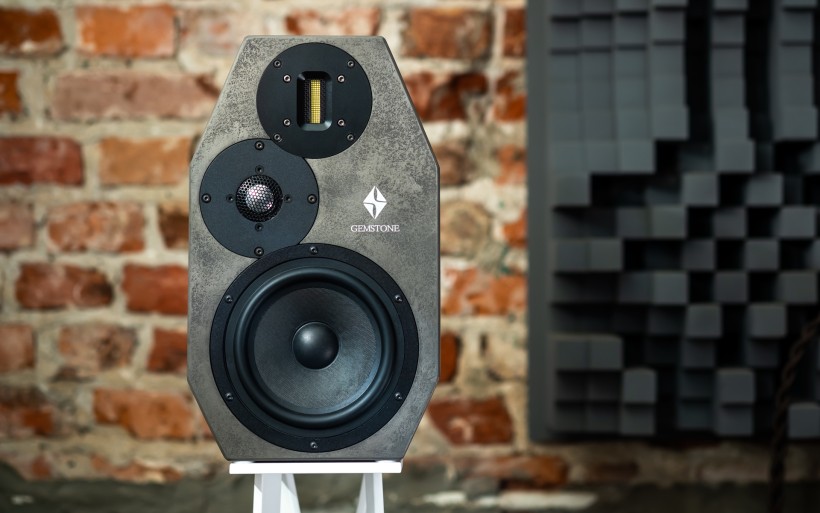 Since 2008 Grzegorz has been running a company specialized in processing large-format sintered slabs meant for kitchen countertops, sinks, walls etc. His expertise spans from various natural minerals used in housing interiors to their artificial equivalents designed for the same purpose. As an audio passionate, at some point he applied the associated know-how and materials to a speaker enclosure, which busy with a selection of cherry-picked components made great sound. This wholly positive outcome was then reinforced with adequate feedback from fellow enthusiasts, which incentivized the man to go commercial with this effort. That’s how the brand Gemstone launched in 2021 in Poland’s city of Szczecin. When asked about his primary motivation, Grzegorz told me that he pursued high performance as much as functionally valid visual uniqueness that departs itself from the industry’s boring veneered MDF standard. His access to an unusual material with great self-damping properties and brilliant looks introduced an opportunity to do just that. One quick glance at the current Gemstone lineup is all it takes to get the memo. Prior to digging into that, I had to ask Grzegorz about his other hobbies and audio system. When I reached out to him, he was about to go on holiday across Europe on his 2019 Ducati Multistrada, so he’s clearly big on enduro bikes. At home he rocks digital hardware by AudioPhonique and Rockna, tubed Prima Luna and vintage Kharma class D mono amps, SOtM’s streamer and Roon as his playback platform of choice.
Since 2008 Grzegorz has been running a company specialized in processing large-format sintered slabs meant for kitchen countertops, sinks, walls etc. His expertise spans from various natural minerals used in housing interiors to their artificial equivalents designed for the same purpose. As an audio passionate, at some point he applied the associated know-how and materials to a speaker enclosure, which busy with a selection of cherry-picked components made great sound. This wholly positive outcome was then reinforced with adequate feedback from fellow enthusiasts, which incentivized the man to go commercial with this effort. That’s how the brand Gemstone launched in 2021 in Poland’s city of Szczecin. When asked about his primary motivation, Grzegorz told me that he pursued high performance as much as functionally valid visual uniqueness that departs itself from the industry’s boring veneered MDF standard. His access to an unusual material with great self-damping properties and brilliant looks introduced an opportunity to do just that. One quick glance at the current Gemstone lineup is all it takes to get the memo. Prior to digging into that, I had to ask Grzegorz about his other hobbies and audio system. When I reached out to him, he was about to go on holiday across Europe on his 2019 Ducati Multistrada, so he’s clearly big on enduro bikes. At home he rocks digital hardware by AudioPhonique and Rockna, tubed Prima Luna and vintage Kharma class D mono amps, SOtM’s streamer and Roon as his playback platform of choice. Should you wonder how a newcomer audio designer knows that his stuff is any good, friends with various systems help to determine that. When this is out of the way and willingness to commercially press on is still alive, knocking at distributor doors and seeking evaluation there seems to be the next move to make. Gemstone is to an extent already sorted in this regard. Grzegorz works with the local distributor/reseller company Koris, which is known as one of the most effective such establishments in Poland. Warsaw area residents can listen to his designs at the High End Alliance shop located near the city’s center. I was also told that Gemstone’s own showroom is already in the works. Not too shabby. On that note, two audio spaces plus one extra in the pipeline may not sound like much. If their staff knows what they’re doing however, it’s actually more than enough to spread the word, finalize some sales and keep the momentum going. Besides, the brand’s presence at the key European shows and distributor places surely builds confidence among shoppers. To that we may as well add Gemstone’s steadily growing press coverage and nice site with decent shots. It’s a bit shy on the key info, but I was told that this is about to change soon. All in all, Grzegorz struck me as very serious and passionate about what he does as an audio maker, which is just the blend of attitudes to have.
Should you wonder how a newcomer audio designer knows that his stuff is any good, friends with various systems help to determine that. When this is out of the way and willingness to commercially press on is still alive, knocking at distributor doors and seeking evaluation there seems to be the next move to make. Gemstone is to an extent already sorted in this regard. Grzegorz works with the local distributor/reseller company Koris, which is known as one of the most effective such establishments in Poland. Warsaw area residents can listen to his designs at the High End Alliance shop located near the city’s center. I was also told that Gemstone’s own showroom is already in the works. Not too shabby. On that note, two audio spaces plus one extra in the pipeline may not sound like much. If their staff knows what they’re doing however, it’s actually more than enough to spread the word, finalize some sales and keep the momentum going. Besides, the brand’s presence at the key European shows and distributor places surely builds confidence among shoppers. To that we may as well add Gemstone’s steadily growing press coverage and nice site with decent shots. It’s a bit shy on the key info, but I was told that this is about to change soon. All in all, Grzegorz struck me as very serious and passionate about what he does as an audio maker, which is just the blend of attitudes to have.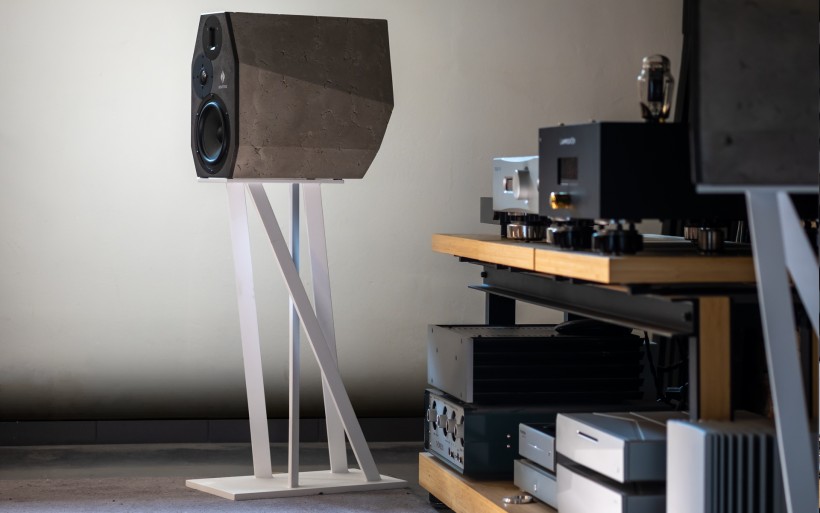 During our introductory Munich chat Grzegorz was open to sending my way either of the two speaker sets in his current roster, which isn’t going to expand anytime soon. It lists Gemini priced at €23’499/pr, while Libra sells for €8’499/pr and matched stands for it want €1‘399/pr. Non-standard finishes (i.e. gold, silver, patina, rust etc.) charge extra and ought to be discussed individually with Gemstone’s founder. He’s also open to any other ideas in this regard, of course as long as the technology at his disposal allows for their execution. I opted for the Libra primarily due to its reasonably compact footprint and already ace street cred. When convenience talks, I listen. The loaner set I got was provided by Maciej Lenar of AudioPhonique. Each speaker inside its own cardboard nested in-between two foamy supports precisely cut to accommodate its angled frame. Twin powder-coated white steel stands had their flat bits secured via circular foams and that’s it, mainly because I had no space to store two large cardboards extra.
During our introductory Munich chat Grzegorz was open to sending my way either of the two speaker sets in his current roster, which isn’t going to expand anytime soon. It lists Gemini priced at €23’499/pr, while Libra sells for €8’499/pr and matched stands for it want €1‘399/pr. Non-standard finishes (i.e. gold, silver, patina, rust etc.) charge extra and ought to be discussed individually with Gemstone’s founder. He’s also open to any other ideas in this regard, of course as long as the technology at his disposal allows for their execution. I opted for the Libra primarily due to its reasonably compact footprint and already ace street cred. When convenience talks, I listen. The loaner set I got was provided by Maciej Lenar of AudioPhonique. Each speaker inside its own cardboard nested in-between two foamy supports precisely cut to accommodate its angled frame. Twin powder-coated white steel stands had their flat bits secured via circular foams and that’s it, mainly because I had no space to store two large cardboards extra.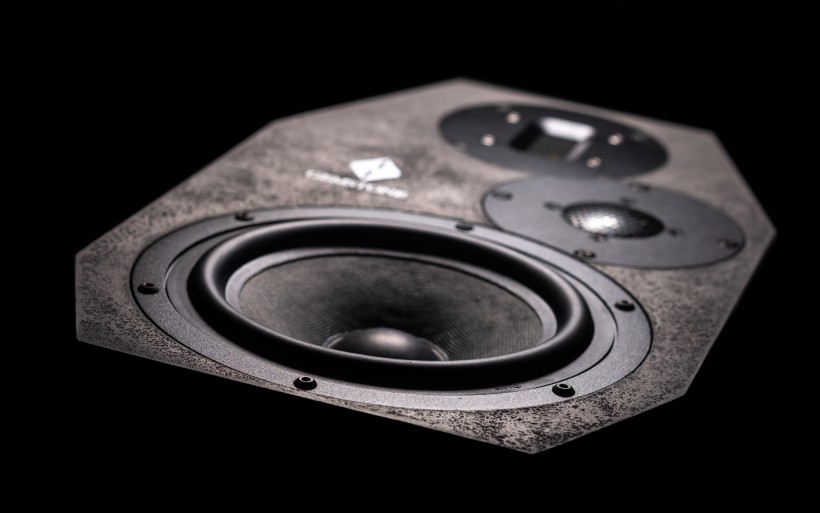 As far as technical details go, the manufacturer’s site doesn’t say much about Libra and Grzegorz is shy on such details too. We know that each speaker measures 45 x 37 x 22cm (D x H x W) and weighs 8kg, so is unusually deep for a stand mount yet perfectly manageable by one adult. Libra’s declared sensitivity is 86dB and this is a three-way design ported on the rear. Grzegorz asked about its nominal impedance and frequency range dubbed these specs as… acceptable and sufficient. Rather peculiar data, isn’t it? There’s more to it. I was told the exact numbers and can say that they’re in order and honest given the product type. I also have been briefed why Libra behaves the way it does and which parts it incorporates. That said, I was given all this info to better understand the product, but it’s not meant for public consumption. If a designer wants to remain secretive about any specific part of his work for whatever reason, so be it. Should you wonder why Grzegorz leans towards that in the first place, as a newcomer to the audio biz he wants listeners to evaluate his speakers based on their actual performance instead of individual parts.
As far as technical details go, the manufacturer’s site doesn’t say much about Libra and Grzegorz is shy on such details too. We know that each speaker measures 45 x 37 x 22cm (D x H x W) and weighs 8kg, so is unusually deep for a stand mount yet perfectly manageable by one adult. Libra’s declared sensitivity is 86dB and this is a three-way design ported on the rear. Grzegorz asked about its nominal impedance and frequency range dubbed these specs as… acceptable and sufficient. Rather peculiar data, isn’t it? There’s more to it. I was told the exact numbers and can say that they’re in order and honest given the product type. I also have been briefed why Libra behaves the way it does and which parts it incorporates. That said, I was given all this info to better understand the product, but it’s not meant for public consumption. If a designer wants to remain secretive about any specific part of his work for whatever reason, so be it. Should you wonder why Grzegorz leans towards that in the first place, as a newcomer to the audio biz he wants listeners to evaluate his speakers based on their actual performance instead of individual parts.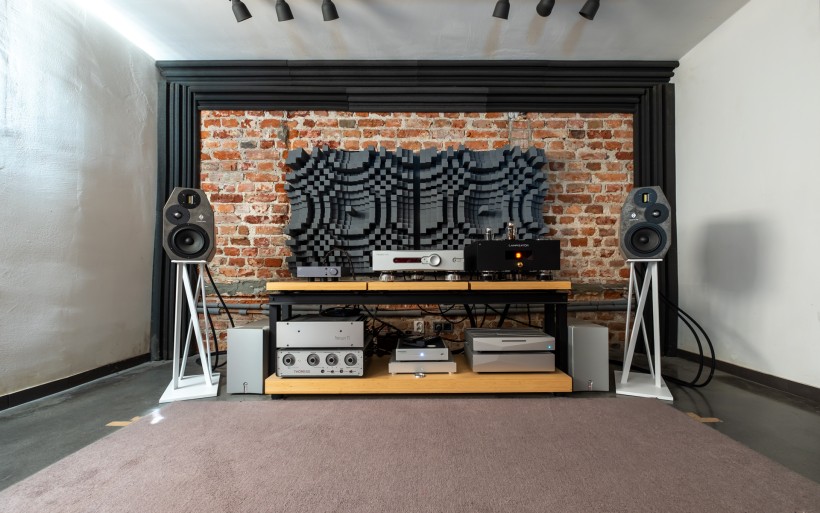 On the upside, Grzegorz was quite open about Libra’s enclosure, which is arguably the most intriguing part of this design. Concrete cabinets aren’t anything new per se and we’ve already seen quite a few of them over the years. The density and weight of concrete make it a material with great mechanical properties; resonance absorption and damping via mass. Designs which incorporate it are thus very heavy, but not Libra. Grzegorz told me that cabinets in both his loudspeaker models are based on a novel mineral compound that’s mechanically superb and light. Prior to securing it he’d sampled dozens of similar materials. That alone took several years of research, multiple attempts in the good ‘ol trial ‘n’ error fashion and unsurprisingly significant financial investments. We don’t know what’s exactly in the man’s chemical mixture of choice, but specialist concrete powder and resin are just two ingredients on the far longer list. The manufacturing stage involves casting as one step out of many more to come. Here timing is critical. Once the initial phase is done, the compound needs 30 days in specific environment to become chemically stable and ready for further processing. Libra’s front panel based on a different compound than the remaining body further raises the manufacturing complexity, and so does the enclosure’s variable thickness that spans from 10 to 15mm.
On the upside, Grzegorz was quite open about Libra’s enclosure, which is arguably the most intriguing part of this design. Concrete cabinets aren’t anything new per se and we’ve already seen quite a few of them over the years. The density and weight of concrete make it a material with great mechanical properties; resonance absorption and damping via mass. Designs which incorporate it are thus very heavy, but not Libra. Grzegorz told me that cabinets in both his loudspeaker models are based on a novel mineral compound that’s mechanically superb and light. Prior to securing it he’d sampled dozens of similar materials. That alone took several years of research, multiple attempts in the good ‘ol trial ‘n’ error fashion and unsurprisingly significant financial investments. We don’t know what’s exactly in the man’s chemical mixture of choice, but specialist concrete powder and resin are just two ingredients on the far longer list. The manufacturing stage involves casting as one step out of many more to come. Here timing is critical. Once the initial phase is done, the compound needs 30 days in specific environment to become chemically stable and ready for further processing. Libra’s front panel based on a different compound than the remaining body further raises the manufacturing complexity, and so does the enclosure’s variable thickness that spans from 10 to 15mm.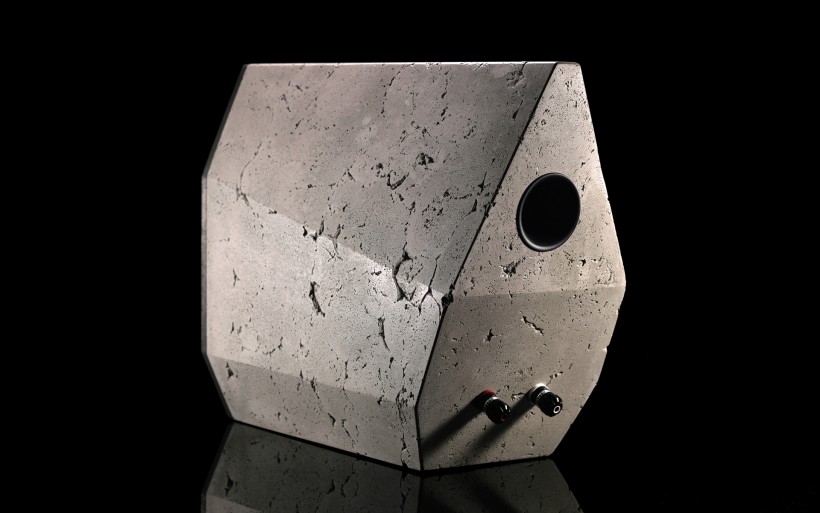 I’m not entirely sure whether today’s photos communicate that, but Gemstone Libra in the flesh is one gorgeous looker. The concrete texture busy with uneven cracks and canyons visible all over the product’s surface feels very nice to the touch. It’s just a private preference, but I’d take this finish over veneers, lacquers and most wood types in a heartbeat. Libra’s concrete elegantly raw highly appealing exterior makes it a very much premium design that was neither cheap nor easy to make. This racy enclosure tilted on the rear also serves an important acoustic purpose, its multiple angled planes form a structure that prevents standing waves. Since the result visually resembles a gem, the brand name is fitting to say the least. As far as fit ‘n’ finish goes, Libra is excellent. All edges are nicely trimmed and tolerances are tight. I applaud Grzegorz for expertly incorporating WBT speaker posts and drivers in his composite cabinets.
I’m not entirely sure whether today’s photos communicate that, but Gemstone Libra in the flesh is one gorgeous looker. The concrete texture busy with uneven cracks and canyons visible all over the product’s surface feels very nice to the touch. It’s just a private preference, but I’d take this finish over veneers, lacquers and most wood types in a heartbeat. Libra’s concrete elegantly raw highly appealing exterior makes it a very much premium design that was neither cheap nor easy to make. This racy enclosure tilted on the rear also serves an important acoustic purpose, its multiple angled planes form a structure that prevents standing waves. Since the result visually resembles a gem, the brand name is fitting to say the least. As far as fit ‘n’ finish goes, Libra is excellent. All edges are nicely trimmed and tolerances are tight. I applaud Grzegorz for expertly incorporating WBT speaker posts and drivers in his composite cabinets.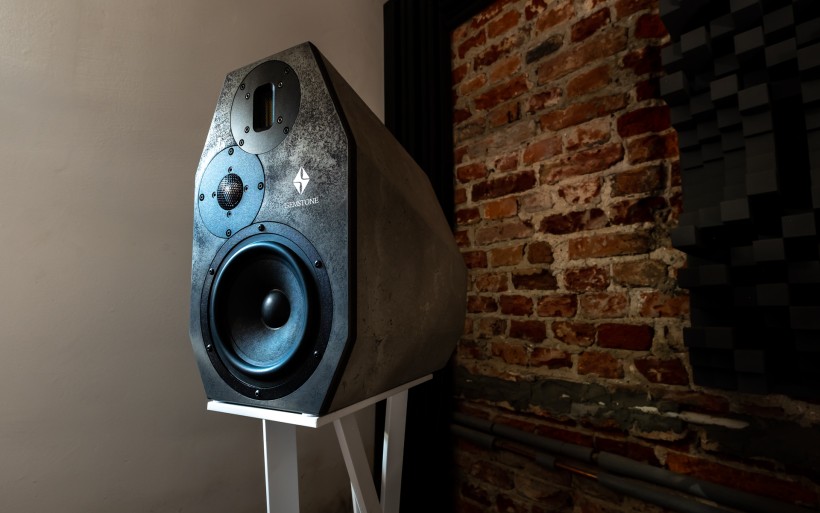 Although the identity of Libra’s drivers remains the manufacturer’s sweet secret, we know that this is a three-way affair. The mid/woofer with paper cone is subject to a high-pass filter, the aluminium dome tweeter is cut via low/high-pass network and the ribbon tweeter sees a low-pass slope. I can’t say much, but the ribbon transducer is more than just a super tweeter and the interaction between the mid/woofer and domed tweeter just above it is unusual and interesting. The filtering network occupies a large PCB which keeps all the coils (air and foil types) as far away one from another as possible. X-over components are by Mundorf and Jensen, while the hookup wiring is from Neotech. Just two internal bracings between each cabinet’s cheeks reinforce the entire structure and provide support for the crossover board. The asymmetrical driver alignment suggests that Libra can be used with its domed drivers either inside or out. Here the manufacturer suggests the former scenario, but experiments with both to find the optimal setting are welcomed. Now it’s time to investigate how this report’s concrete gems sound like.
Although the identity of Libra’s drivers remains the manufacturer’s sweet secret, we know that this is a three-way affair. The mid/woofer with paper cone is subject to a high-pass filter, the aluminium dome tweeter is cut via low/high-pass network and the ribbon tweeter sees a low-pass slope. I can’t say much, but the ribbon transducer is more than just a super tweeter and the interaction between the mid/woofer and domed tweeter just above it is unusual and interesting. The filtering network occupies a large PCB which keeps all the coils (air and foil types) as far away one from another as possible. X-over components are by Mundorf and Jensen, while the hookup wiring is from Neotech. Just two internal bracings between each cabinet’s cheeks reinforce the entire structure and provide support for the crossover board. The asymmetrical driver alignment suggests that Libra can be used with its domed drivers either inside or out. Here the manufacturer suggests the former scenario, but experiments with both to find the optimal setting are welcomed. Now it’s time to investigate how this report’s concrete gems sound like.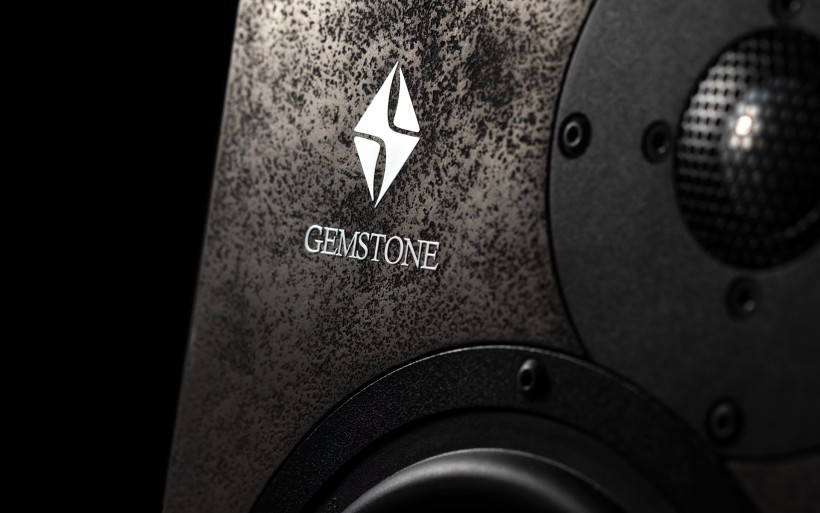 It was crystal clear that the Libra had to fight with the Vox. Both are stand mounts in roughly similar financial ballpark. Trilogy 995R monos pack enough output power to easily accommodate these loads and their noticeably different sensitivities. In short, Libra was a far tougher speaker set to drive. In my room it also behaved like a conventional rear-ported design. Move it too close to the wall and massive bass is the outcome. Limit that lateral support too much and poof, that frequency range is no longer there. The routine to determine the balance was hardly a chore, but the available wiggle room was a fairly small distance of roughly 30cm or so. Polish speakers positioned one meter away from the wall had their bass way out of proportions; bloated, fuzzy, wobbly and slow. Upon adding half a meter extra, the outcome was far too skinny to my taste. The distance of 130cm however got me exactly where I wanted. Then Libra’s lows developed the extra muscle, reach and substance and kept smear and other unwanted turbulences at bay. Room talk didn’t factor either. This was a good sign, especially for a ported design positioned relatively close to my crib’s brick wall. A gentle toe in with domed tweeters faced towards the inside sealed the deal.
It was crystal clear that the Libra had to fight with the Vox. Both are stand mounts in roughly similar financial ballpark. Trilogy 995R monos pack enough output power to easily accommodate these loads and their noticeably different sensitivities. In short, Libra was a far tougher speaker set to drive. In my room it also behaved like a conventional rear-ported design. Move it too close to the wall and massive bass is the outcome. Limit that lateral support too much and poof, that frequency range is no longer there. The routine to determine the balance was hardly a chore, but the available wiggle room was a fairly small distance of roughly 30cm or so. Polish speakers positioned one meter away from the wall had their bass way out of proportions; bloated, fuzzy, wobbly and slow. Upon adding half a meter extra, the outcome was far too skinny to my taste. The distance of 130cm however got me exactly where I wanted. Then Libra’s lows developed the extra muscle, reach and substance and kept smear and other unwanted turbulences at bay. Room talk didn’t factor either. This was a good sign, especially for a ported design positioned relatively close to my crib’s brick wall. A gentle toe in with domed tweeters faced towards the inside sealed the deal.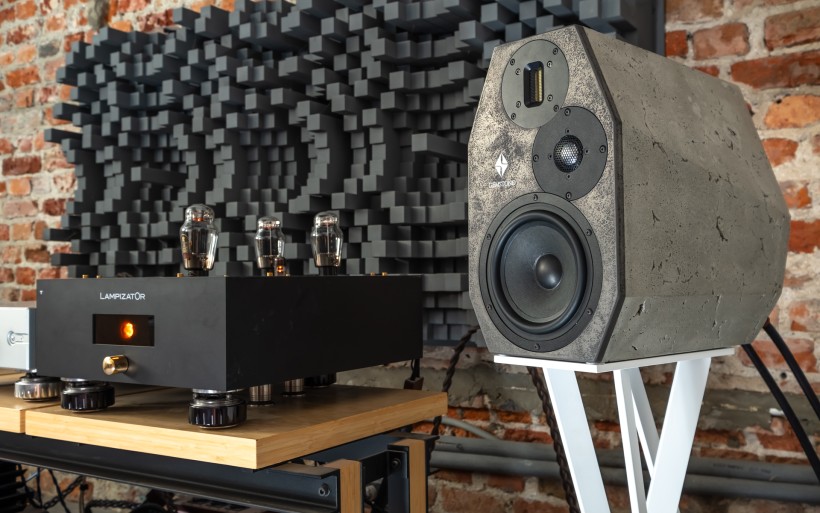 It’s worth noting that Vox monitors on their own legs are significantly shorter than Libra, so early on I wondered whether this was about to become an issue or not. It wasn’t. The naturally tilted former speaker set radiates at an angle and hits just at the height where my head is. The newcomer positioned on its own tall vertically straight stands a good meter closer to the front wall. As it turned out, that extra distance away from the listening seat sufficed to secure imaging that felt coherent and not overly elevated. This meant that the comparison of the two monitors on their stock legs was possible.
It’s worth noting that Vox monitors on their own legs are significantly shorter than Libra, so early on I wondered whether this was about to become an issue or not. It wasn’t. The naturally tilted former speaker set radiates at an angle and hits just at the height where my head is. The newcomer positioned on its own tall vertically straight stands a good meter closer to the front wall. As it turned out, that extra distance away from the listening seat sufficed to secure imaging that felt coherent and not overly elevated. This meant that the comparison of the two monitors on their stock legs was possible.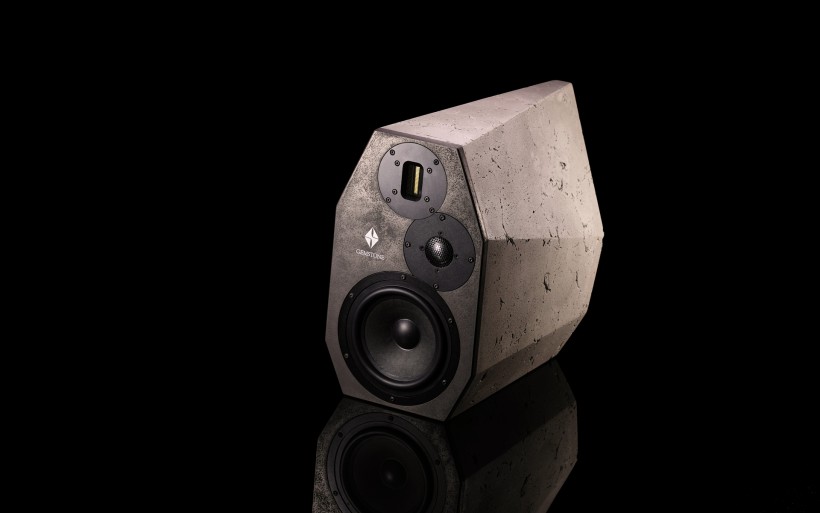 Prior to auditioning Libra at my place I honestly had no clue what to expect. My Munich experience with this concrete specimen wasn’t enough to know what it could/couldn’t do, or how was it profiled. At the MOC it was showcased in a semi-open rather noisy space after all. For what it’s worth, a ported design implied bass response on the bloomy, thick and probably calm if not slow side. Paper cones on mid/woofers spelled out textural density and tone above outline specificity and clarity. Twin tweeters suggested highly developed brilliance region, openness, air and freshness, albeit without any insight into the eventual cost paid in undesirable twitchiness, nervousness and glare. Then again, this was nothing more than casual guesswork. Monitors often pack many surprises. Large boxes can produce primarily intimate, innocent and delicate sound. Conversely, many small stand mounts are tuned to surprise with big bold attitude that defies their tiny footprint. It didn’t take long to notice that Libra had its own agenda outside these two flavors.
Prior to auditioning Libra at my place I honestly had no clue what to expect. My Munich experience with this concrete specimen wasn’t enough to know what it could/couldn’t do, or how was it profiled. At the MOC it was showcased in a semi-open rather noisy space after all. For what it’s worth, a ported design implied bass response on the bloomy, thick and probably calm if not slow side. Paper cones on mid/woofers spelled out textural density and tone above outline specificity and clarity. Twin tweeters suggested highly developed brilliance region, openness, air and freshness, albeit without any insight into the eventual cost paid in undesirable twitchiness, nervousness and glare. Then again, this was nothing more than casual guesswork. Monitors often pack many surprises. Large boxes can produce primarily intimate, innocent and delicate sound. Conversely, many small stand mounts are tuned to surprise with big bold attitude that defies their tiny footprint. It didn’t take long to notice that Libra had its own agenda outside these two flavors.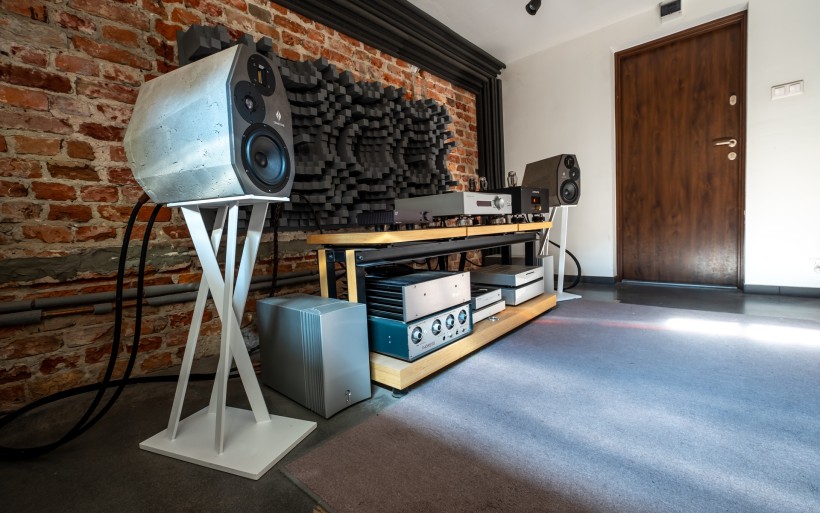 The only factually correct part from the above that applies to Libra was its well-pronounced upper frequency range. The list of the usual benefits included clarity, freshness and shine, so traits which partially contribute to quickness and largely to openness. In my room Libra staged like a monster. On that particular score it really impressed, to a point where I quickly started considering it a speaker set with means to spatially outgrow that space. I’m not saying that it would. I don’t have any other listening floor at my disposal. The sensation was there, however. Not only Libra proved nicely developed on imaging width and height, but it also sounded big without making any effort at all. Here high-tiered composure and substance are essential. A speaker that stages enormously large yet can’t keep up with the beat is just a pretender; a wannabe with bold aspirations and no means to back them up. Libra had both and that made a world of difference.
The only factually correct part from the above that applies to Libra was its well-pronounced upper frequency range. The list of the usual benefits included clarity, freshness and shine, so traits which partially contribute to quickness and largely to openness. In my room Libra staged like a monster. On that particular score it really impressed, to a point where I quickly started considering it a speaker set with means to spatially outgrow that space. I’m not saying that it would. I don’t have any other listening floor at my disposal. The sensation was there, however. Not only Libra proved nicely developed on imaging width and height, but it also sounded big without making any effort at all. Here high-tiered composure and substance are essential. A speaker that stages enormously large yet can’t keep up with the beat is just a pretender; a wannabe with bold aspirations and no means to back them up. Libra had both and that made a world of difference. Ported bass is a wide subject. Some speakers do it better than others. Although Boenicke W11 SE+ floorstanders feature narrow openings on the rear, you couldn’t tell upon connecting that load to a powerful amp with very low output impedance. Then the Boenicks hit very hard, reach very low and develop enough edges and composure downstairs to behave like a sealed box busy with a large bass cone or two. sound|kaos monitors armed with twin side-firing woofers inside slotted cabinets can’t mimic that sort of action. Without external assistance their bass won’t ever grow really large and effortless at high SPL. It’s a trivial thing to say, but one compact enclosure can’t fool physics. Libra struck me as a speaker set on the fence of pulling just that. At reasonable volume its bass maintained a spot on ratio of heft, reach, speed and articulation. Upon engaging the party mode I naturally expected excessive wobble, bloom and farts from the rear, which would reinforce room gain. That wasn’t the case. When pushed really hard, the Polish set stiffened its suspension and kept developing the extra torque and bite. It just casually slammed harder and harder without anything odd going on yet remained texturally ripe and collected.
Ported bass is a wide subject. Some speakers do it better than others. Although Boenicke W11 SE+ floorstanders feature narrow openings on the rear, you couldn’t tell upon connecting that load to a powerful amp with very low output impedance. Then the Boenicks hit very hard, reach very low and develop enough edges and composure downstairs to behave like a sealed box busy with a large bass cone or two. sound|kaos monitors armed with twin side-firing woofers inside slotted cabinets can’t mimic that sort of action. Without external assistance their bass won’t ever grow really large and effortless at high SPL. It’s a trivial thing to say, but one compact enclosure can’t fool physics. Libra struck me as a speaker set on the fence of pulling just that. At reasonable volume its bass maintained a spot on ratio of heft, reach, speed and articulation. Upon engaging the party mode I naturally expected excessive wobble, bloom and farts from the rear, which would reinforce room gain. That wasn’t the case. When pushed really hard, the Polish set stiffened its suspension and kept developing the extra torque and bite. It just casually slammed harder and harder without anything odd going on yet remained texturally ripe and collected.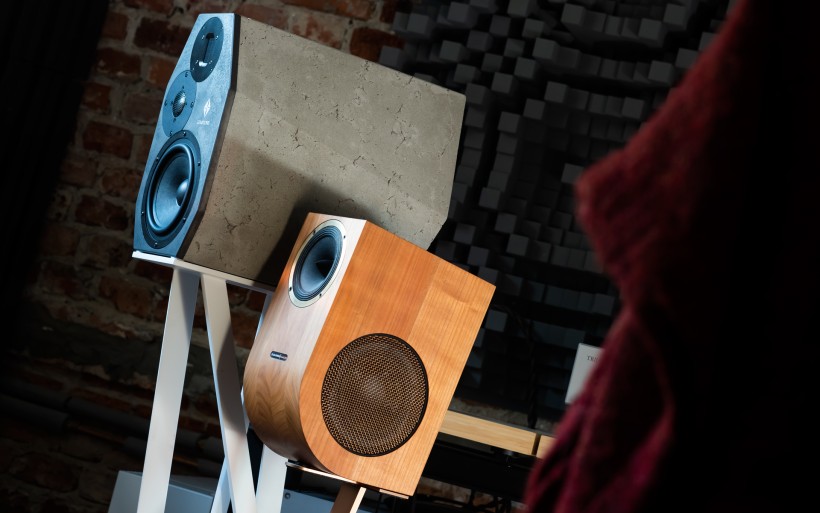 This was a nice reminder. When an open zesty speaker set also knows how to land energetic, powerful, elastic and controlled downstairs and keep the associated intruders at the door, then it feels very much alive, moving and intense. The engagement and excitement factor with such finely tuned performers is very high. Libra is like that. Instead of pretending, it just kept tapping into whatever was necessary to handle my playlist fully and without any hiccups. Its spatially liberated gutsy profile also packed one unexpected yet highly desirable boon. By securing lots of points on substance, Libra didn’t feel any diffused, distant or veiled, not in the slightest. Quite the contrary. In my system it sounded direct, communicative and expressive. This was particularly useful on tracks where naturally enlarged vocals positioned near a microphone were the key focal point. The surprise was positive mainly because we don’t expect high dosages of suchness, intimacy and sensuality from products groomed like today’s snappy radiant spatially majestic affair.
This was a nice reminder. When an open zesty speaker set also knows how to land energetic, powerful, elastic and controlled downstairs and keep the associated intruders at the door, then it feels very much alive, moving and intense. The engagement and excitement factor with such finely tuned performers is very high. Libra is like that. Instead of pretending, it just kept tapping into whatever was necessary to handle my playlist fully and without any hiccups. Its spatially liberated gutsy profile also packed one unexpected yet highly desirable boon. By securing lots of points on substance, Libra didn’t feel any diffused, distant or veiled, not in the slightest. Quite the contrary. In my system it sounded direct, communicative and expressive. This was particularly useful on tracks where naturally enlarged vocals positioned near a microphone were the key focal point. The surprise was positive mainly because we don’t expect high dosages of suchness, intimacy and sensuality from products groomed like today’s snappy radiant spatially majestic affair.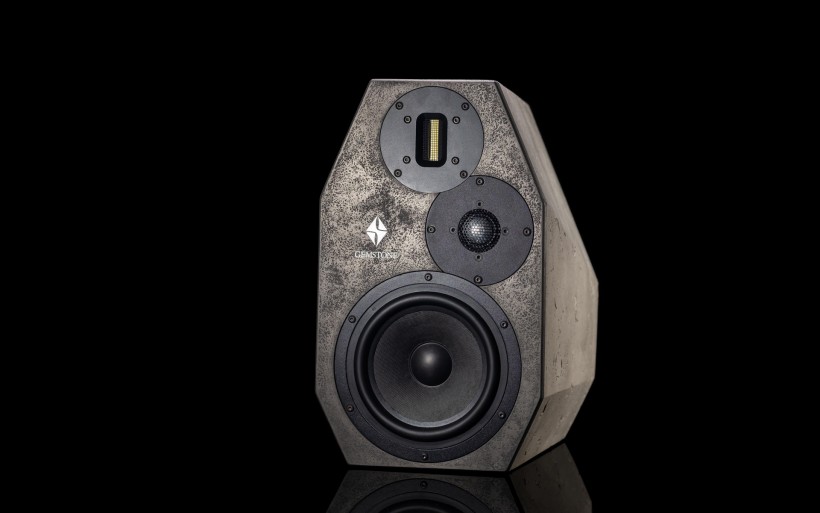 The above portrays Libra as a do-it-all performer that caters to all audience. It doesn’t. No speaker set truly does and each works within a specific technological context that defines boundaries. Today’s Gemstone was a touch cooler and harder than the Vox, so companion amps voiced similarly to my 55wpc class A monos are welcomed. Although texturally gifted and radiant in the grand scheme, it wasn’t quite as seductive, illuminated and intense on colors as the Swiss. This augmented widebander also emerged as the more articulated and investigative of the two, and scored more points on imaging specificity, depth and accuracy. No surprises here to be honest, the Vox is quite fiendish in these regards, but the Pole had its revenge elsewhere. It delivered tighter, grander and more pressurized bass that reached lower and spanned dynamic contrasts wider, which on brutal metal and rock fare secured more entertaining, elastic and adrenaline-infused performance all in all. Libra had its upper registers less fine and also free from pointy bits yet sensibly weightier. At high volume level my daily driver’s delicate full-range cones start to shout eventually. The local opponent’s arsenal does not. When pressed hard, this one becomes more alert, ballsier and fully awake instead of surrendering. Enthusiasts of heavy genres will find that useful I’m sure. Let’s wrap.
The above portrays Libra as a do-it-all performer that caters to all audience. It doesn’t. No speaker set truly does and each works within a specific technological context that defines boundaries. Today’s Gemstone was a touch cooler and harder than the Vox, so companion amps voiced similarly to my 55wpc class A monos are welcomed. Although texturally gifted and radiant in the grand scheme, it wasn’t quite as seductive, illuminated and intense on colors as the Swiss. This augmented widebander also emerged as the more articulated and investigative of the two, and scored more points on imaging specificity, depth and accuracy. No surprises here to be honest, the Vox is quite fiendish in these regards, but the Pole had its revenge elsewhere. It delivered tighter, grander and more pressurized bass that reached lower and spanned dynamic contrasts wider, which on brutal metal and rock fare secured more entertaining, elastic and adrenaline-infused performance all in all. Libra had its upper registers less fine and also free from pointy bits yet sensibly weightier. At high volume level my daily driver’s delicate full-range cones start to shout eventually. The local opponent’s arsenal does not. When pressed hard, this one becomes more alert, ballsier and fully awake instead of surrendering. Enthusiasts of heavy genres will find that useful I’m sure. Let’s wrap.
Expensive compact monitors may seem like challenging investments at first, mainly because their small frames suggest performance below floorstanders. This is plainly untrue when small rooms come into play. Then new rules apply and turn such assumptions into outdated stereotypes and silliness. In spaces like mine, monitor speakers reign supreme. Gemstone Libra makes that point very well. Highly gifted where it matters and sharply dressed, it’s a luxurious artisanal-level effort no less. It sounded great all across the board and excelled each time big-bore sonics were in demand. My time spent with this expertly executed compact standout was pure joy, so I encourage you to listen to it whenever the opportunity to do so reveals itself. It’s really worth it!
Associated Equipment:
- Amplifier: Trilogy 995R, FirstWatt F7, Enleum AMP-23R
- DAC: LampizatOr Pacific (KR Audio T-100 / Living Voice 300B + KR Audio 5U4G Ltd. Ed.)
- Speakers: Boenicke Audio W11 SE+, sound|kaos Vox 3afw
- Transport: Innuos Statement, fidata HFAS1-S10U
- Preamplifier: Trilogy 915R, Thöress DFP
- Speaker cables: Boenicke Audio S3, LessLoss C-MARC
- Headphones: HifiMan Susvara
- Speaker signal conditioning: LessLoss Firewall for Loudspeakers, Boenicke ComDev
- Anti-vibration conditioning: 6x Carbide Base Diamond (under speakers), 6x Carbide Base Micro Diamond with TwinDamp inserts and spikes (under DAC and pre)
- Interconnects: LessLoss Entropic Process C-MARC, Boenicke Audio IC3 CG
- Power components: Gigawatt PC-3 SE EVO+/LC-3 EVO, LessLoss C-MARC, LessLoss Entropic Process C-MARC, Boenicke Audio Power Gate, ISOL-8 Prometheus
- USB components: iFi audio Mercury3.0
- Rack: Franc Audio Accesories Wood Block Rack 1+3
- Network: Fidelizer EtherStream, Linksys WRT160N
- Music: NativeDSD
Retail prices of reviewed components in EU (incl. VAT):
- Gemstone Libra: €8’499/pr
- Gemstone stands: €1’399/pr
Manufacturer: Gemstone



